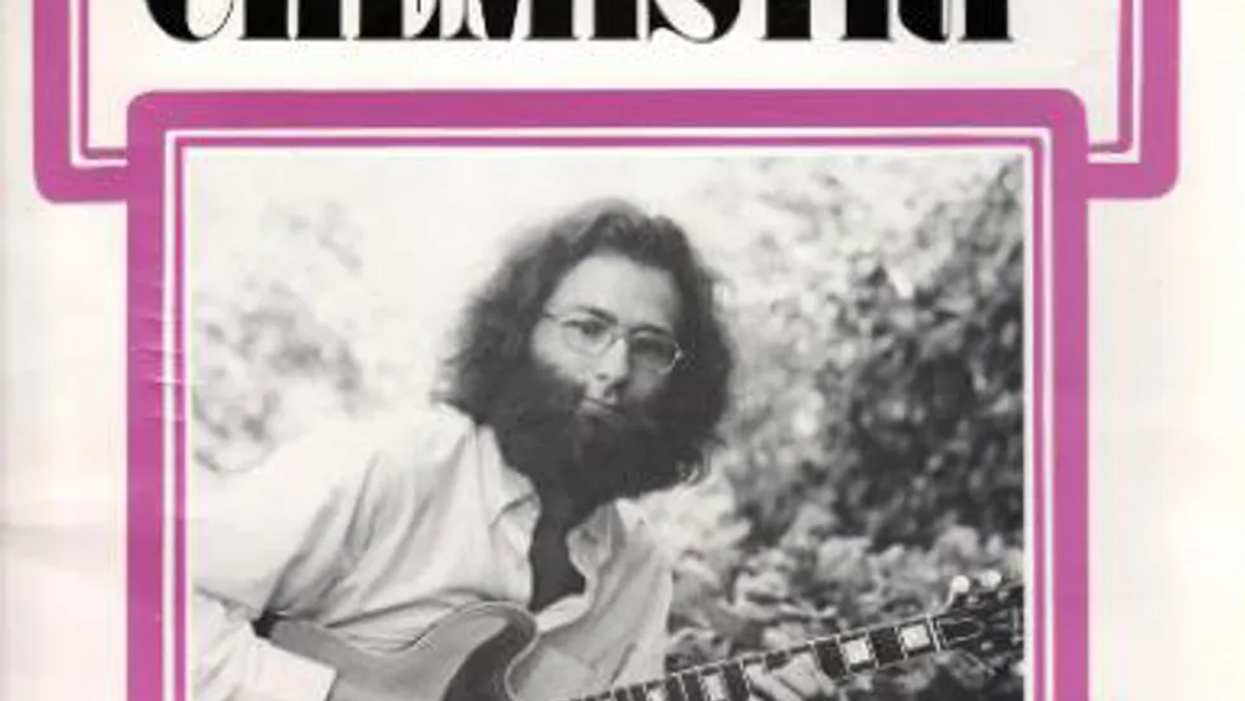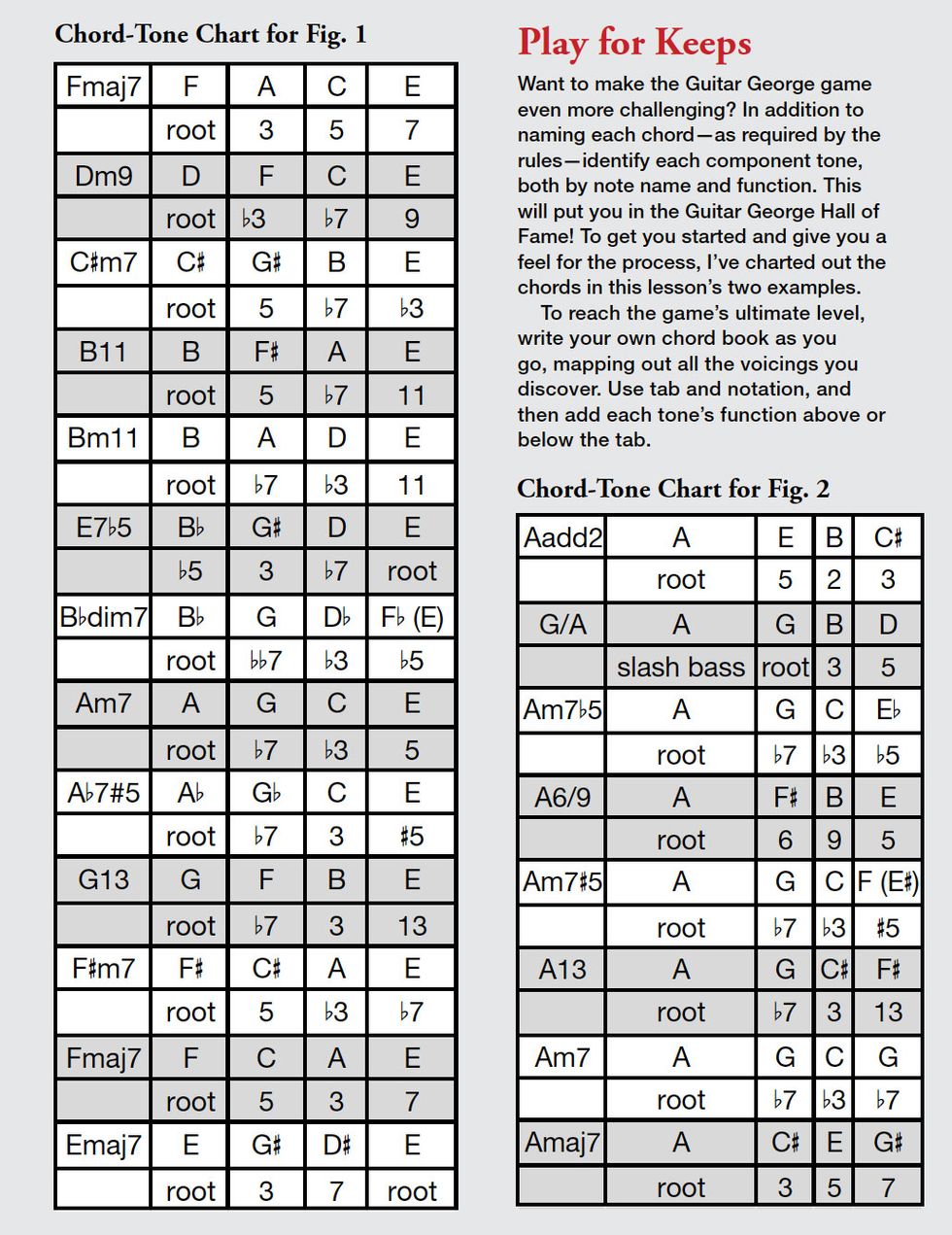When “Sultans of Swing" first hit the airwaves in 1978, I remember going ape over Mark Knopfler's supple lines and bell-like Strat tone. But something else struck me as well, and that was the line “You check out Guitar George, he knows all the chords." I thought, “Wow, I wonder what it's like to know all the chords. I want to be that guy!"
So I set out to learn as many chords as I could. Along the way, I developed a little game to help me expand my harmonic vocabulary. Of course, since then I've discovered that no one really knows all the chords—although the late Ted Greene could be the exception—but I still play the game.
The rules are simple: Choose a note and then play as many chords as possible that each include this particular tone in the identical fretboard location. This common tone is the only fixed element—all the other notes are up for grabs. When playing this game, you suspend all requirements for keys, cadence, or tonality. The chords don't have to make sense as a progression—that's not the point. Instead, the goal is to construct a chord sequence based around one note that's shared by every voicing. Each chord earns you a point. How many can you build off a given note before running out of ideas ... four? Eight? Or maybe 12 or more?
The only other rule: You must name every chord you play. Gripping a shape you can't identify is cheating.
Guitar George has different levels of complexity. I've found it's easiest to begin with a common tone in the highest voice and build the chords below it. Ex. 1 illustrates the process. If you squint at the notation, you'll see that every chord has E on the 2nd string as the top note. For example, in measure 1, Fmaj7, Dm9, C#m7, and B11 all share E—this is the “anchor" tone, if you will.
Click here for Ex. 1
Likewise, the chords in measures 2, 3, and 4 have E as the top note. Don't be fooled by the Fb in measure 2's Bbdim7. Enharmonically, that's E, but the 5 of a Bb chord is F, so when you lower it to a b5 to create a diminished voicing, it becomes Fb—which is an odd duck, I must say. Because Fb is also E by another name, I haven't broken the rules in this round of Guitar George.
But I digress: When you play the 13 chords in this example, you'll see—and hear—how one note is the lynchpin of the entire sequence. Notice how this example is marked “Freely," which simply means there's no tempo. Take your time with each chord and observe how the bass descends in a more-or-less stepwise manner. Essentially, the middle notes get filled in between the fixed high note and the descending bass line.
Of course, in this game the anchor tone doesn't have to be the top note. In Ex. 2, the chord sequence revolves around A on the 6th string. Once again, the key is irrelevant—all that matters is keeping that low A as the bottom note in each voicing. To make a chord sequence more demanding, simply add rhythm to it, as I've done here. This makes the exercise a bit more musical and forces you to practice the chord-to-chord movement to nail the changes in time.
Click here for Ex. 2
There you have it—Guitar George. It's fun, especially if you play the game with a friend or two, and you challenge each other to see how many chords you can play and name based on a common tone in a fixed fretboard position. Start off with a common tone in the lowest or highest voice to get a feel for the game, and then see if you can play a sequence using a middle voice as a common tone instead. Or make it really challenging by declaring two common tones. However you play it, Guitar George will push your chord-voicing chops to new heights.














![Rig Rundown: Russian Circles’ Mike Sullivan [2025]](https://www.premierguitar.com/media-library/youtube.jpg?id=62303631&width=1245&height=700&quality=70&coordinates=0%2C0%2C0%2C0)













